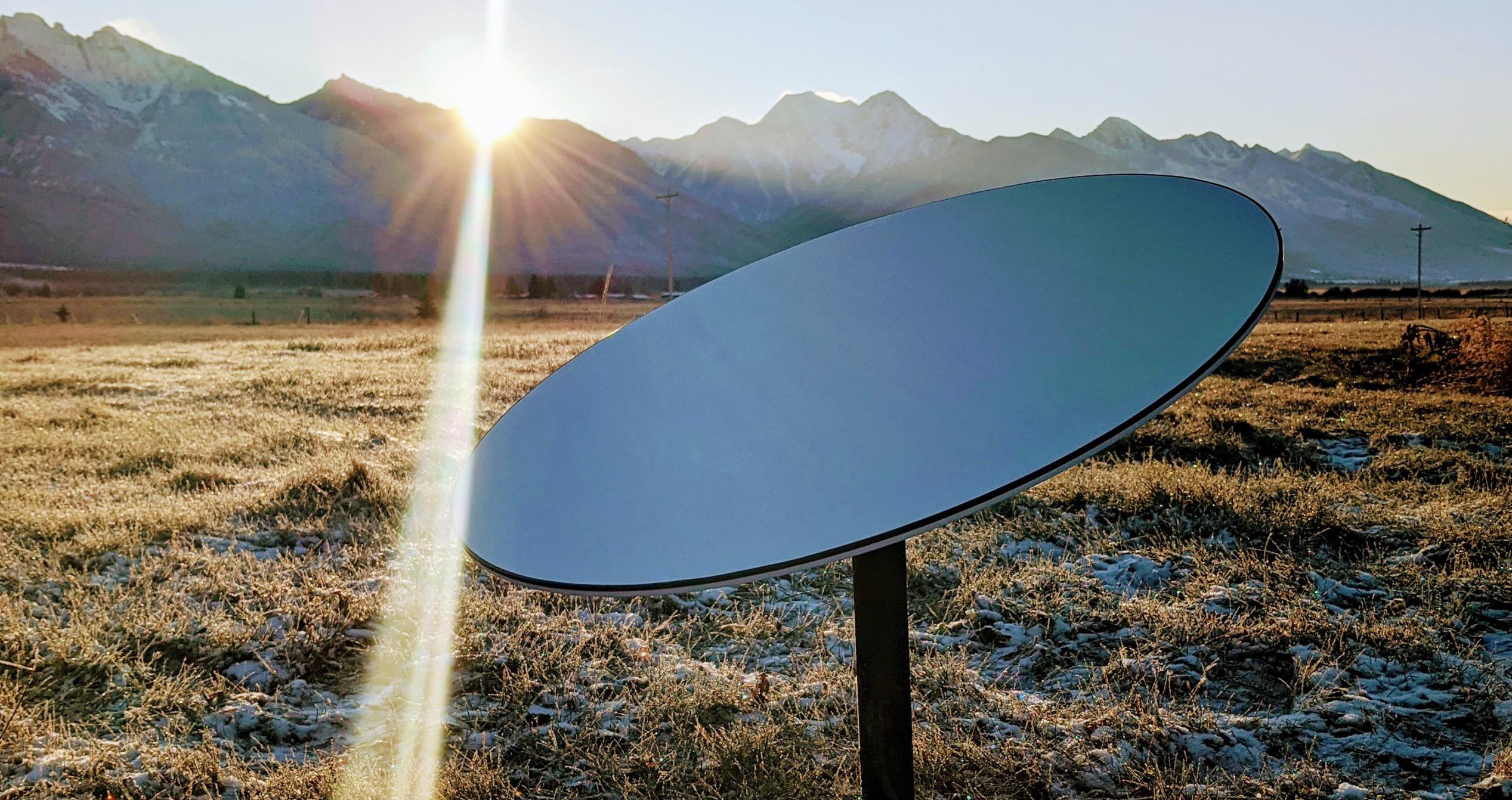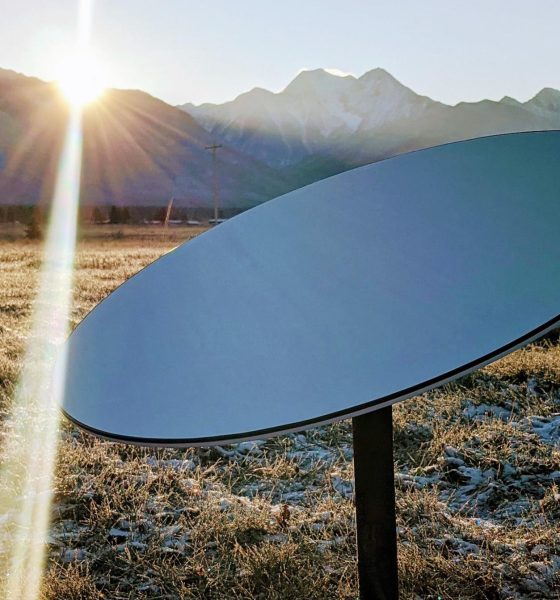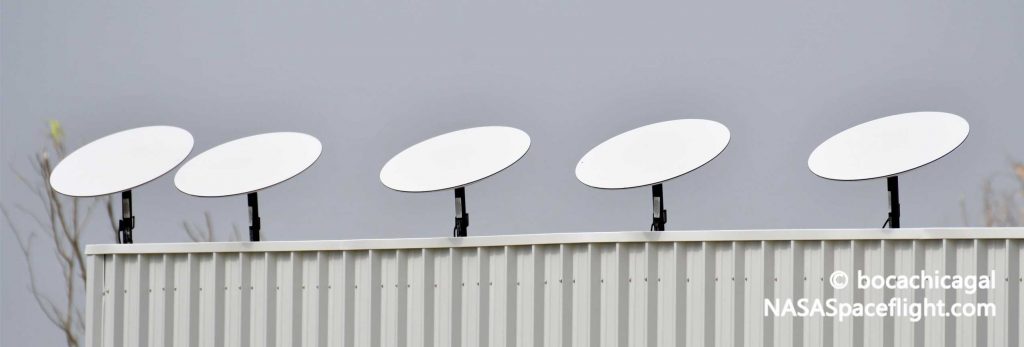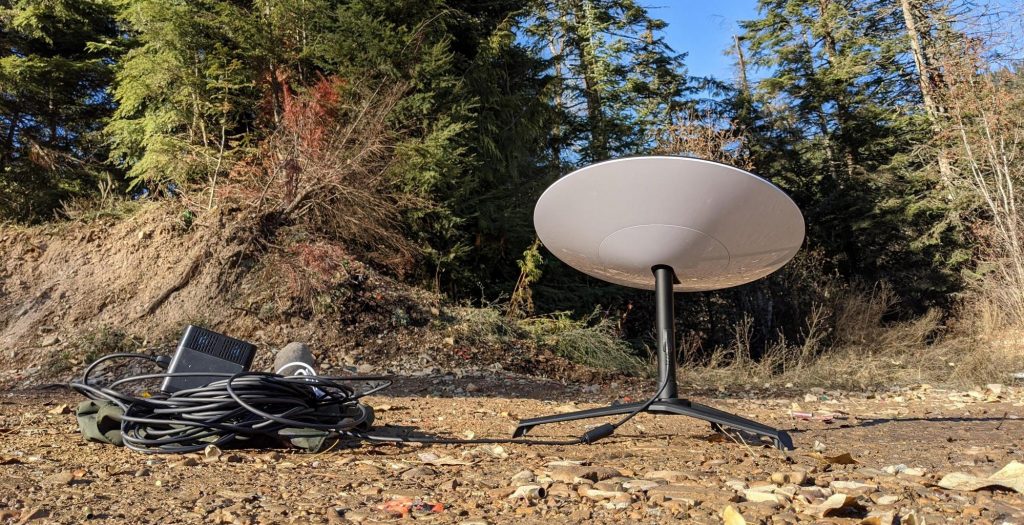

News
SpaceX Starlink internet approved in Canada, beta invites imminent
SpaceX’s Starlink satellite internet has officially won regulatory approval in Canada and CEO Elon Musk says that the first beta invites will begin to be sent out a matter of days from now.
Known as Innovation, Science and Economic Development Canada (ISED), the decision was made well before most – including Musk himself – expected it, suggesting that the Canadian agency may have been responding to growing consumer enthusiasm and interest in Starlink internet. Since SpaceX began shipping Starlink user terminals to US beta testers less than two weeks ago, rural Americans have quickly come to heap praise on the new technology – warts and all.
Transparently deemed the “Better Than Nothing Beta” by SpaceX itself, the user-side hardware is still in its infancy and the satellite constellation is far smaller than optimal, resulting in the occasional dropped connection and inconsistent speeds and latency. Nevertheless, the service SpaceX has managed to deliver before anyone else appears to be extremely promising and is now poised to expand beyond the United States for the first time.
In the Northern US, particularly Montana, new Starlink beta users have already begun to demonstrate that the cutting-edge technology is impressively resilient in the face of extreme weather. Thus far, users have already shown their Starlink antennas happily chugging along in blizzard conditions – covered in snow, icicles hanging off – without significantly disrupting the quality of the internet they are delivering.
Canada will likely serve as an additional torture test for the Starlink antennas and services sent that way, although the far north will have to wait for the time being. At the moment, according to email correspondence between SpaceQ and Elon Musk, Starlink’s Canadian foray will be significantly limited at first. To understand why, one must first understand how Starlink works.
At the moment, each orbiting Starlink satellite services as a separate node in the network, only capable of communicating with user terminals (antennas) on the ground or more substantial SpaceX-operated hubs known as ground stations. Those ground stations are the backbone of the internet service, linking the orbiting network to the rest of the Earth-based internet. To connect end-users, a satellite orbiting over head will connect to their user terminal, receive uplink requests (clicking on a link, watching a video), route those requests through a separate beam to a ground station, which then beams that content back to the Starlink satellite before being beamed down to the end-user.


Without those ground stations, Starlink is (somewhat) akin to a home network WiFi router without a cable modem. Unfortunately for SpaceX, radiocommunication hardware installation is often strictly regulated and the process is almost always unique and non-transferable in every country on Earth. As such, even with approval to serve Starlink internet in Canada, SpaceX still has to wait for individual approvals for each ground station, of which one or several dozen are necessary. Until those ground stations are approved, Starlink will only be available to Canadians below the 55th parallel, give or take.
On top of ground stations, SpaceX will also need to launch many, many more batches of Starlink satellites to be able to offer reliable and uninterrupted internet in most of the northern hemisphere (and the rest of the world). Nevertheless, with nearly 900 operational Starlink satellites launched less than a year after the first operational mission, it’s difficult to doubt that SpaceX will make it happen – and far sooner than most would reasonably expect.

News
Tesla FSD fleet is nearing 7 billion total miles, including 2.5 billion city miles
As can be seen on Tesla’s official FSD webpage, vehicles equipped with the system have now navigated over 6.99 billion miles.

Tesla’s Full Self-Driving (Supervised) fleet is closing in on almost 7 billion total miles driven, as per data posted by the company on its official FSD webpage.
These figures hint at the massive scale of data fueling Tesla’s rapid FSD improvements, which have been quite notable as of late.
FSD mileage milestones
As can be seen on Tesla’s official FSD webpage, vehicles equipped with the system have now navigated over 6.99 billion miles. Tesla owner and avid FSD tester Whole Mars Catalog also shared a screenshot indicating that from the nearly 7 billion miles traveled by the FSD fleet, more than 2.5 billion miles were driven inside cities.
City miles are particularly valuable for complex urban scenarios like unprotected turns, pedestrian interactions, and traffic lights. This is also the difference-maker for FSD, as only complex solutions, such as Waymo’s self-driving taxis, operate similarly on inner-city streets. And even then, incidents such as the San Francisco blackouts have proven challenging for sensor-rich vehicles like Waymos.
Tesla’s data edge
Tesla has a number of advantages in the autonomous vehicle sector, one of which is the size of its fleet and the number of vehicles training FSD on real-world roads. Tesla’s nearly 7 billion FSD miles then allow the company to roll out updates that make its vehicles behave like they are being driven by experienced drivers, even if they are operating on their own.
So notable are Tesla’s improvements to FSD that NVIDIA Director of Robotics Jim Fan, after experiencing FSD v14, noted that the system is the first AI that passes what he described as a “Physical Turing Test.”
“Despite knowing exactly how robot learning works, I still find it magical watching the steering wheel turn by itself. First it feels surreal, next it becomes routine. Then, like the smartphone, taking it away actively hurts. This is how humanity gets rewired and glued to god-like technologies,” Fan wrote in a post on X.
News
Tesla starts showing how FSD will change lives in Europe
Local officials tested the system on narrow country roads and were impressed by FSD’s smooth, human-like driving, with some calling the service a game-changer for everyday life in areas that are far from urban centers.

Tesla has launched Europe’s first public shuttle service using Full Self-Driving (Supervised) in the rural Eifelkreis Bitburg-Prüm region of Germany, demonstrating how the technology can restore independence and mobility for people who struggle with limited transport options.
Local officials tested the system on narrow country roads and were impressed by FSD’s smooth, human-like driving, with some calling the service a game-changer for everyday life in areas that are far from urban centers.
Officials see real impact on rural residents
Arzfeld Mayor Johannes Kuhl and District Administrator Andreas Kruppert personally tested the Tesla shuttle service. This allowed them to see just how well FSD navigated winding lanes and rural roads confidently. Kruppert said, “Autonomous driving sounds like science fiction to many, but we simply see here that it works totally well in rural regions too.” Kuhl, for his part, also noted that FSD “feels like a very experienced driver.”
The pilot complements the area’s “Citizen Bus” program, which provides on-demand rides for elderly residents who can no longer drive themselves. Tesla Europe shared a video of a demonstration of the service, highlighting how FSD gives people their freedom back, even in places where public transport is not as prevalent.
What the Ministry for Economic Affairs and Transport says
Rhineland-Palatinate’s Minister Daniela Schmitt supported the project, praising the collaboration that made this “first of its kind in Europe” possible. As per the ministry, the rural rollout for the service shows FSD’s potential beyond major cities, and it delivers tangible benefits like grocery runs, doctor visits, and social connections for isolated residents.
“Reliable and flexible mobility is especially vital in rural areas. With the launch of a shuttle service using self-driving vehicles (FSD supervised) by Tesla in the Eifelkreis Bitburg-Prüm, an innovative pilot project is now getting underway that complements local community bus services. It is the first project of its kind in Europe.
“The result is a real gain for rural mobility: greater accessibility, more flexibility and tangible benefits for everyday life. A strong signal for innovation, cooperation and future-oriented mobility beyond urban centers,” the ministry wrote in a LinkedIn post.
News
Tesla China quietly posts Robotaxi-related job listing
Tesla China is currently seeking a Low Voltage Electrical Engineer to work on circuit board design for the company’s autonomous vehicles.

Tesla has posted a new job listing in Shanghai explicitly tied to its Robotaxi program, fueling speculation that the company is preparing to launch its dedicated autonomous ride-hailing service in China.
As noted in the listing, Tesla China is currently seeking a Low Voltage Electrical Engineer to work on circuit board design for the company’s autonomous vehicles.
Robotaxi-specific role
The listing, which was shared on social media platform X by industry watcher @tslaming, suggested that Tesla China is looking to fill the role urgently. The job listing itself specifically mentions that the person hired for the role will be working on the Low Voltage Hardware team, which would design the circuit boards that would serve as the nervous system of the Robotaxi.
Key tasks for the role, as indicated in the job listing, include collaboration with PCB layout, firmware, mechanical, program management, and validation teams, among other responsibilities. The role is based in Shanghai.
China Robotaxi launch
China represents a massive potential market for robotaxis, with its dense urban centers and supportive policies in select cities. Tesla has limited permission to roll out FSD in the country, though despite this, its vehicles have been hailed as among the best in the market when it comes to autonomous features. So far, at least, it appears that China supports Tesla’s FSD and Robotaxi rollout.
This was hinted at in November, when Tesla brought the Cybercab to the 8th China International Import Expo (CIIE) in Shanghai, marking the first time that the autonomous two-seater was brought to the Asia-Pacific region. The vehicle, despite not having a release date in China, received a significant amount of interest among the event’s attendees.








